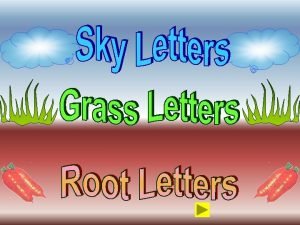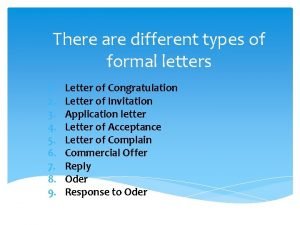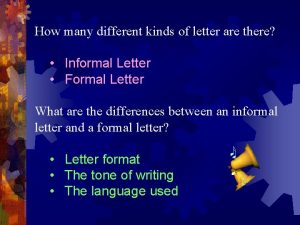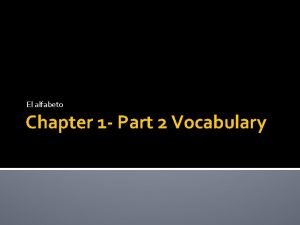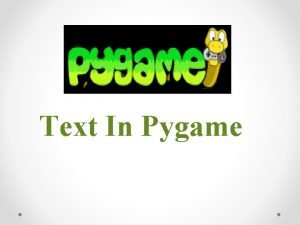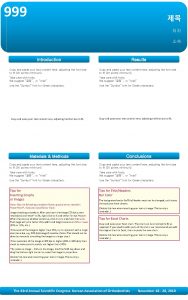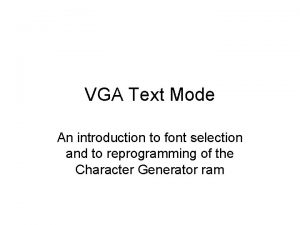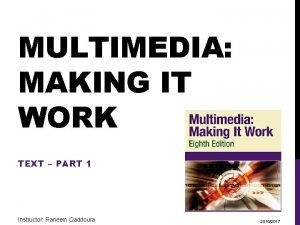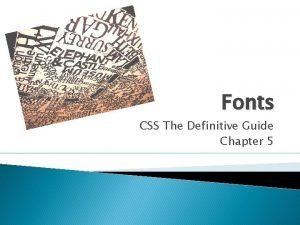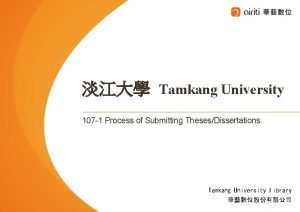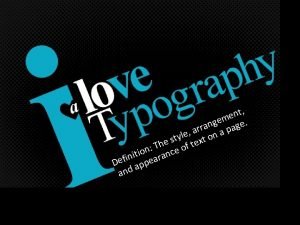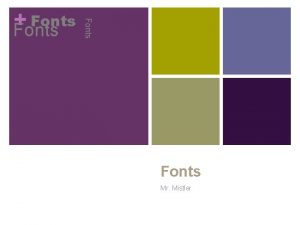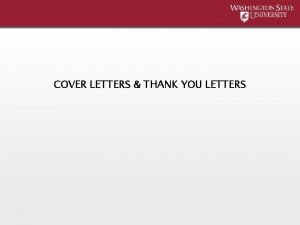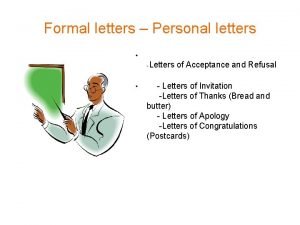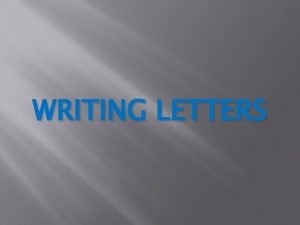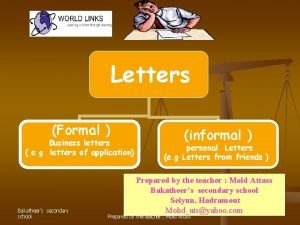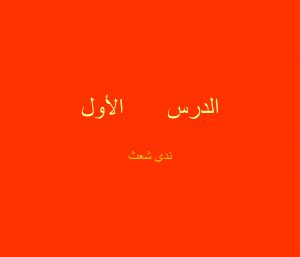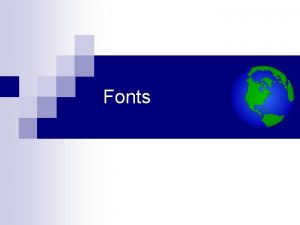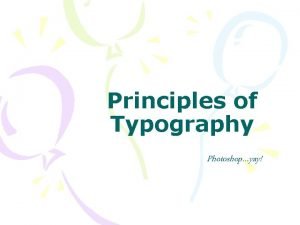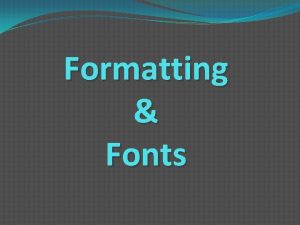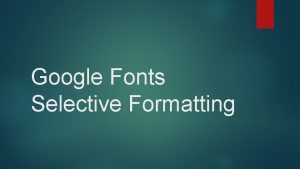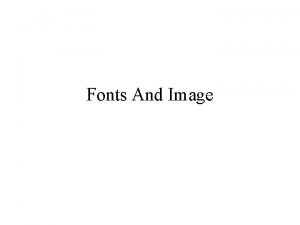Types of Fonts Many letters within fonts are
















- Slides: 16

Types of Fonts

Many letters within fonts are made up of: • Counters • The centers or empty spaces inside letters such as “e”, “g” and “o” • Ascenders • The parts of letters that dip down below the baseline, such as “p”, ”g” and “y” • Descenders • The parts of letters that rise above the baseline, such as “d”, “f” and “h”




Fonts can be categorized into groups based on these characteristics: • Stroke • The width of the lines that make up letters • Stress • The angle at which the stroke changes to thick or thin within a counter • Serifs • The little tails at the end of letters

Stroke

Stress A diagonal stress crosses a counter from the thinnest part of the stroke at the top of the letter to the thinnest part at the bottom. When a letter has a consistent stroke weight, there is no stress A straight stress crosses a counter at the thinnest stroke at top and bottom, making a straight vertical line.

Serifs A straight line that meets the serif without curving is a non-bracketed serif. Bracketed Review: serif - the Sans serif letters bracket is a have no serifs. curved or wedge-like connection between the stem and serif.

Oldstyle • Fonts that have bracketed serifs, angled stress, and strokes that move gently from thick to thin. –Most frequently used for long text passages –Most readable types of fonts

Modern • Modern fonts - have a sharp contrast between thick and thin strokes, unbracketed serifs, and vertical stress.

Slab Serif - very little difference between strokes, heavy serif, and vertical stress.

Sans Serif Sans serif fonts - have no serifs; the strokes are quite even. Because of the evenness of the strokes, there is no visible stress.

Script fonts - based on hand lettering with a calligraphy or brush pen. – some connect, some don’t connect, some are hand printed, and some are traditional calligraphy.

Decorative fonts - fun, distinctive and often convey emotions through their letterforms. There is a decorative font for just about every feeling. These are very powerful fonts that should be used sparingly.

Monospace A proportional typeface contains glyphs of varying widths, while a monospaced (non-proportional or fixed-width) typeface uses a single standard width for all glyphs in the font. Monospaced typefaces function better for some purposes because their glyphs line up in neat, regular columns. –typewriters –Programming and text-only computer displays
 Mikael ferm
Mikael ferm Sky grass and root letters pdf
Sky grass and root letters pdf Kinds of formal letter
Kinds of formal letter Many different kinds of
Many different kinds of How many letters are in the spanish alphabet
How many letters are in the spanish alphabet Walsworth fonts
Walsworth fonts Pygame fonts
Pygame fonts 999 copy and paste fonts
999 copy and paste fonts Vga text modes
Vga text modes Ppf fonts
Ppf fonts The little decoration at the end of a letter stroke is a
The little decoration at the end of a letter stroke is a Gayu in different fonts
Gayu in different fonts Objectiv font
Objectiv font Fonts
Fonts Copypastefonts
Copypastefonts English fonts
English fonts Fonts
Fonts

